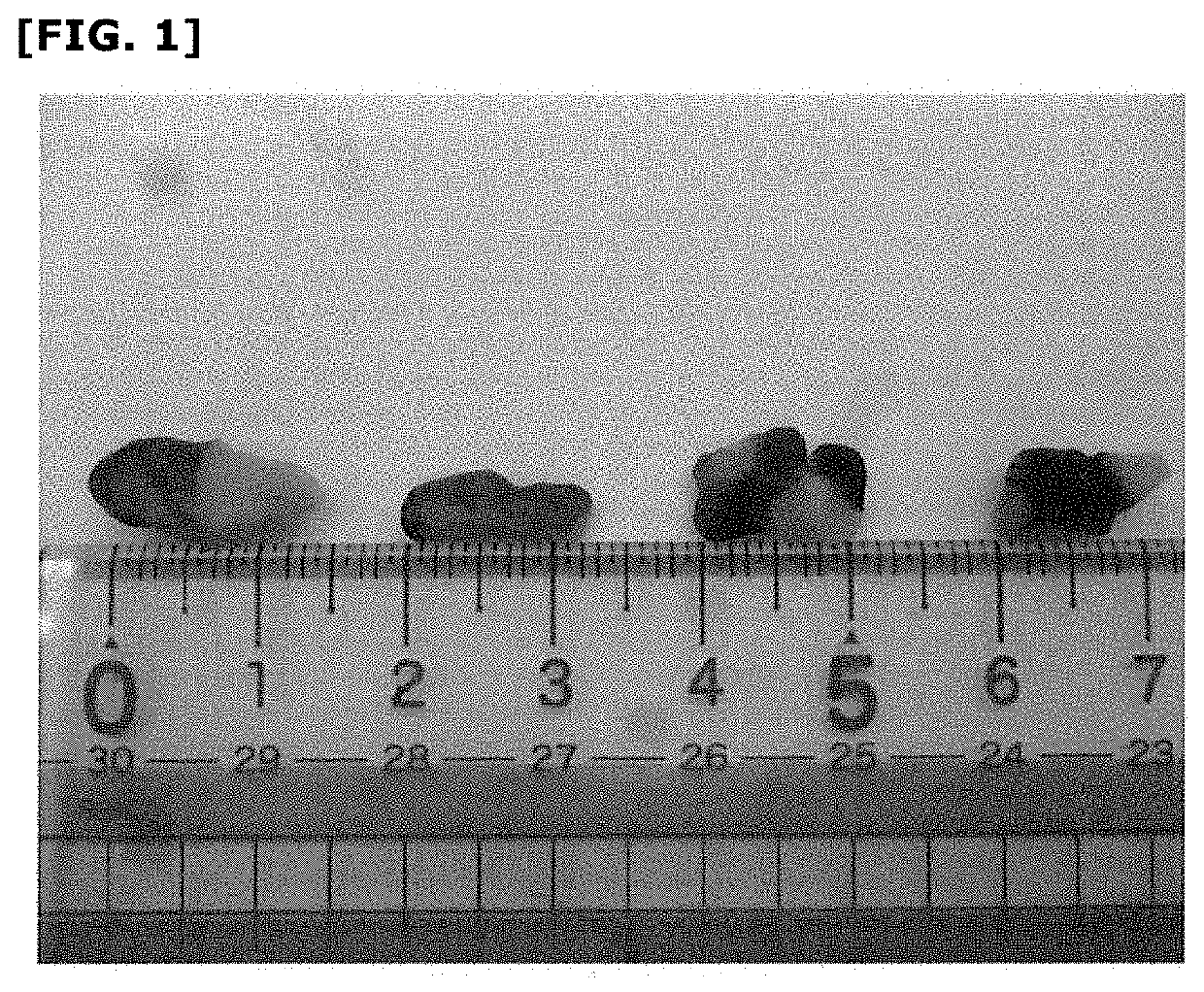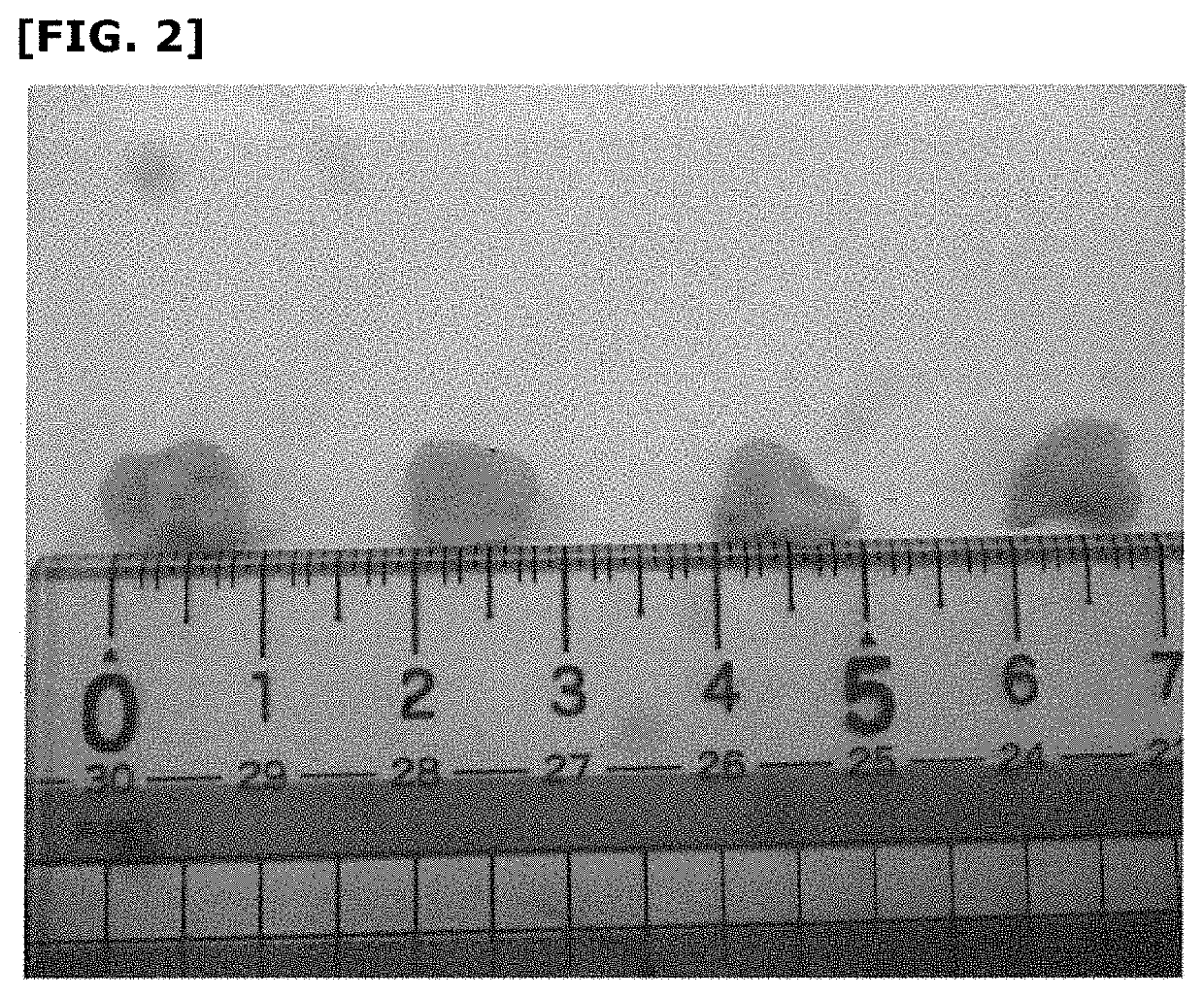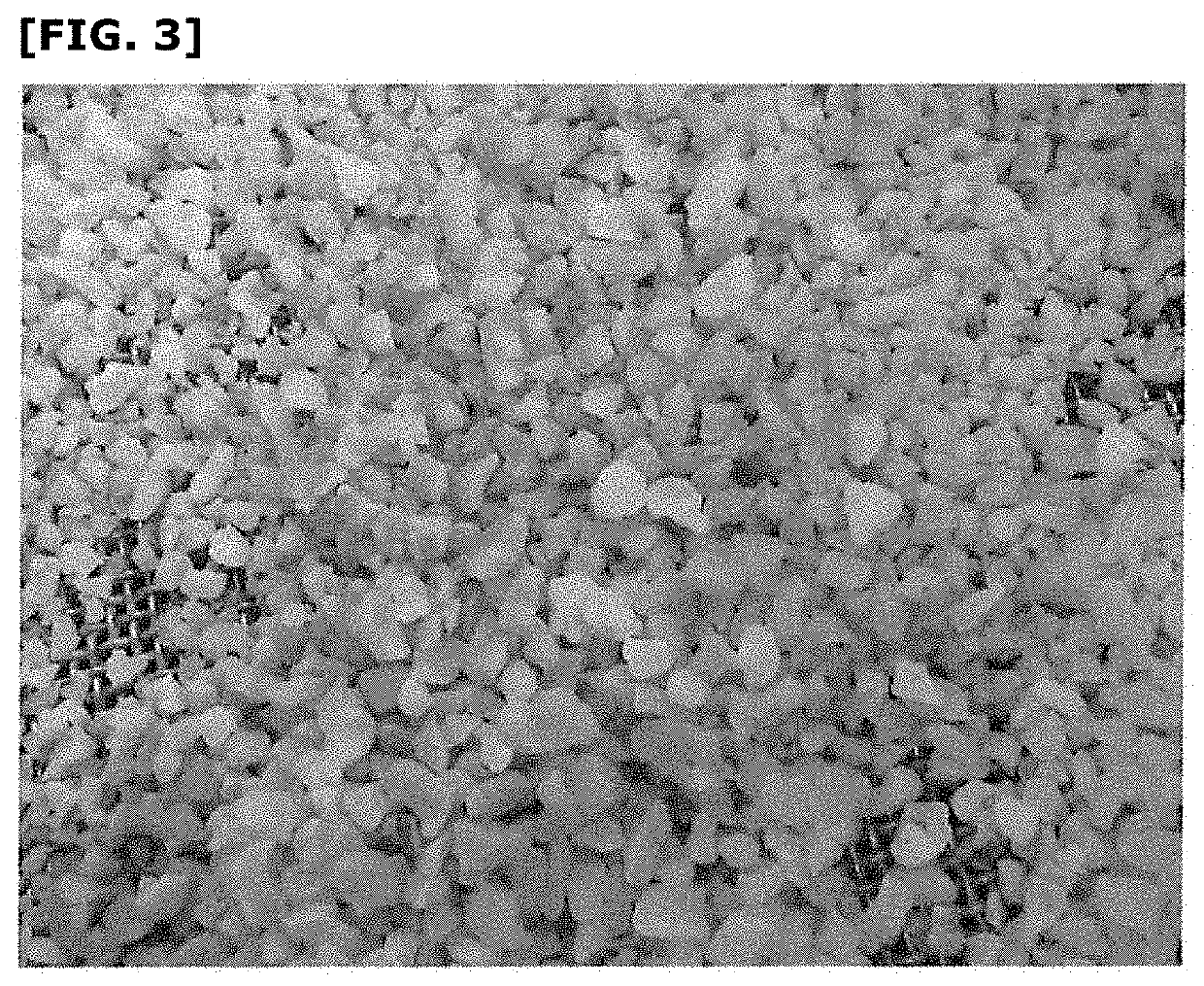Method for manufacturing peeled nuts
a manufacturing method and technology for peeled nuts, applied in the field of peeled nuts manufacturing, can solve the problems of inability to obtain decoated nuts as described above, inability to easily separate reattached thin seed coats, and the product of decoated nuts cannot avoid having astringency due to the mixed thin seed coats, etc., to achieve the effect of efficient manufacturing of high-quality decoated nuts without damage, small mixing, and large siz
- Summary
- Abstract
- Description
- Claims
- Application Information
AI Technical Summary
Benefits of technology
Problems solved by technology
Method used
Image
Examples
example 1
[0090]As the raw material nuts for a test, 900 g of walnuts (LSP) (shelled walnuts for business use) were prepared.
[0091]Incidentally, as a result of actually measuring a size of the walnuts (LSP) as the raw material, the size was in a range of 7 to 14 mm (FIG. 1).
[0092]The walnuts were put into a container of a mixer equipped apparatus (KENMIX model KMM770 manufactured by AICOHSHA MFG CO., LTD.), and about 2 L of liquid nitrogen was poured therein (evaporation was fast, and thus the liquid nitrogen was added in addition to 2 L). Incidentally, a mixer or a sieve was used after cooling was performed at −20° C. for 45 minutes.
[0093]After the walnuts were entirely put in the liquid nitrogen and a waiting time for the boil to settle passed, an anchor type agitating blade was attached, and the agitating was performed for five minutes at a rotating speed of about 480 rpm in a state in which the liquid nitrogen was present as was.
[0094]After the agitating was ended, the walnuts were transf...
example 2
[0099]Here, the same test as that of Example 1 was conducted by using the same raw material and device as those of Example 1 except that sieving was performed for five minutes as a test condition.
[0100]As a result, 67 g of the residue of the seed coat was removed, and the peeled nuts (walnuts) were obtained as a target. A manufacturing yield was 92.5%.
[0101]As a result of the visual observation of the obtained peeled walnuts, most of the thin seed coats were checked to have been removed.
example 3
[0102]Here, the same test as that of Example 1 was conducted by using the same raw material and device as those of Example 1 except that the agitating was performed for five minutes as a test condition, instead of the sieving.
[0103]As a result, 67 g of the residue of the seed coat was removed, and the peeled nuts (walnuts) were obtained as a target. A manufacturing yield was 92.5%.
[0104]As a result of the visual observation of the obtained peeled walnuts, most of the thin seed coats were checked to have been removed.
PUM
 Login to View More
Login to View More Abstract
Description
Claims
Application Information
 Login to View More
Login to View More - R&D
- Intellectual Property
- Life Sciences
- Materials
- Tech Scout
- Unparalleled Data Quality
- Higher Quality Content
- 60% Fewer Hallucinations
Browse by: Latest US Patents, China's latest patents, Technical Efficacy Thesaurus, Application Domain, Technology Topic, Popular Technical Reports.
© 2025 PatSnap. All rights reserved.Legal|Privacy policy|Modern Slavery Act Transparency Statement|Sitemap|About US| Contact US: help@patsnap.com



